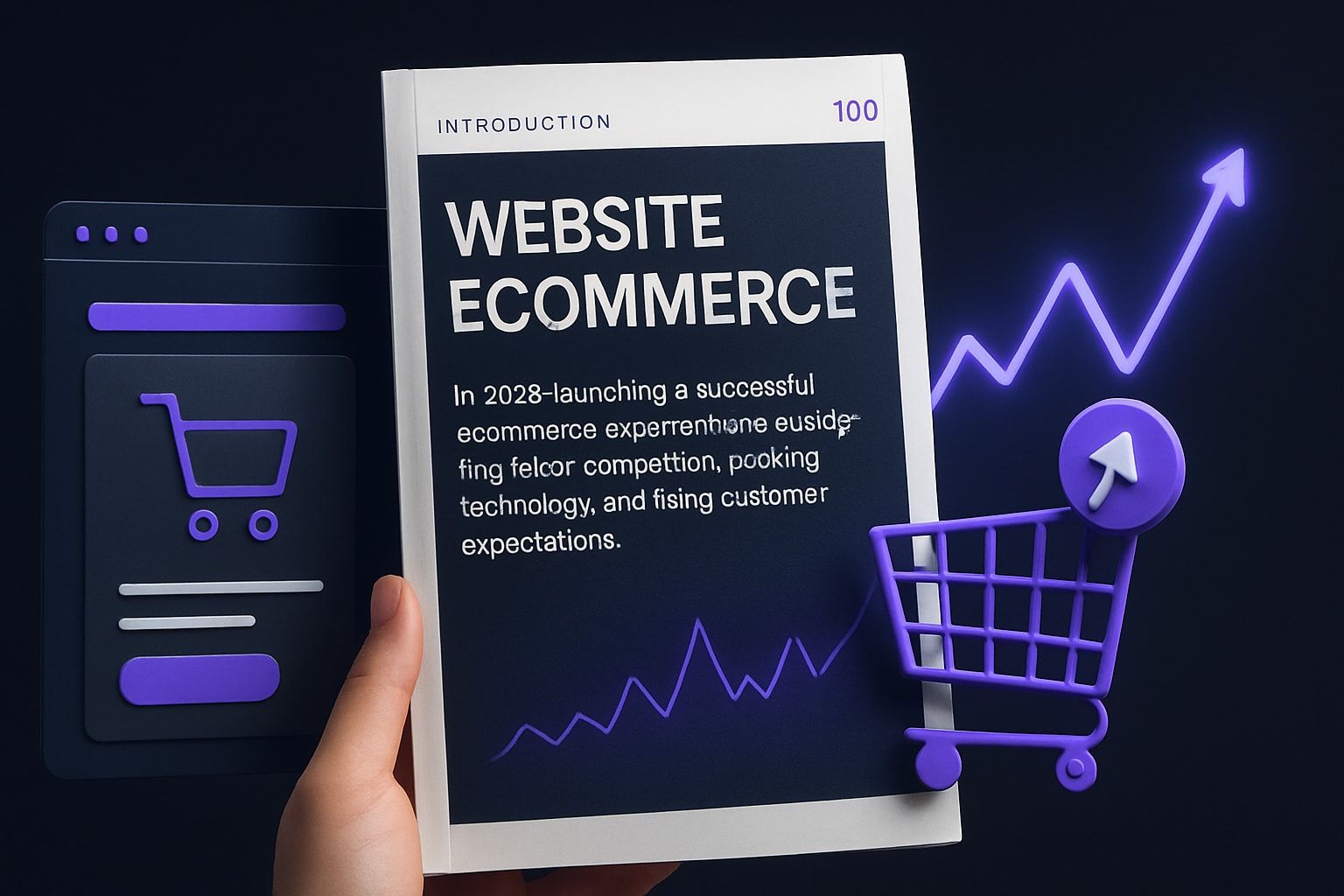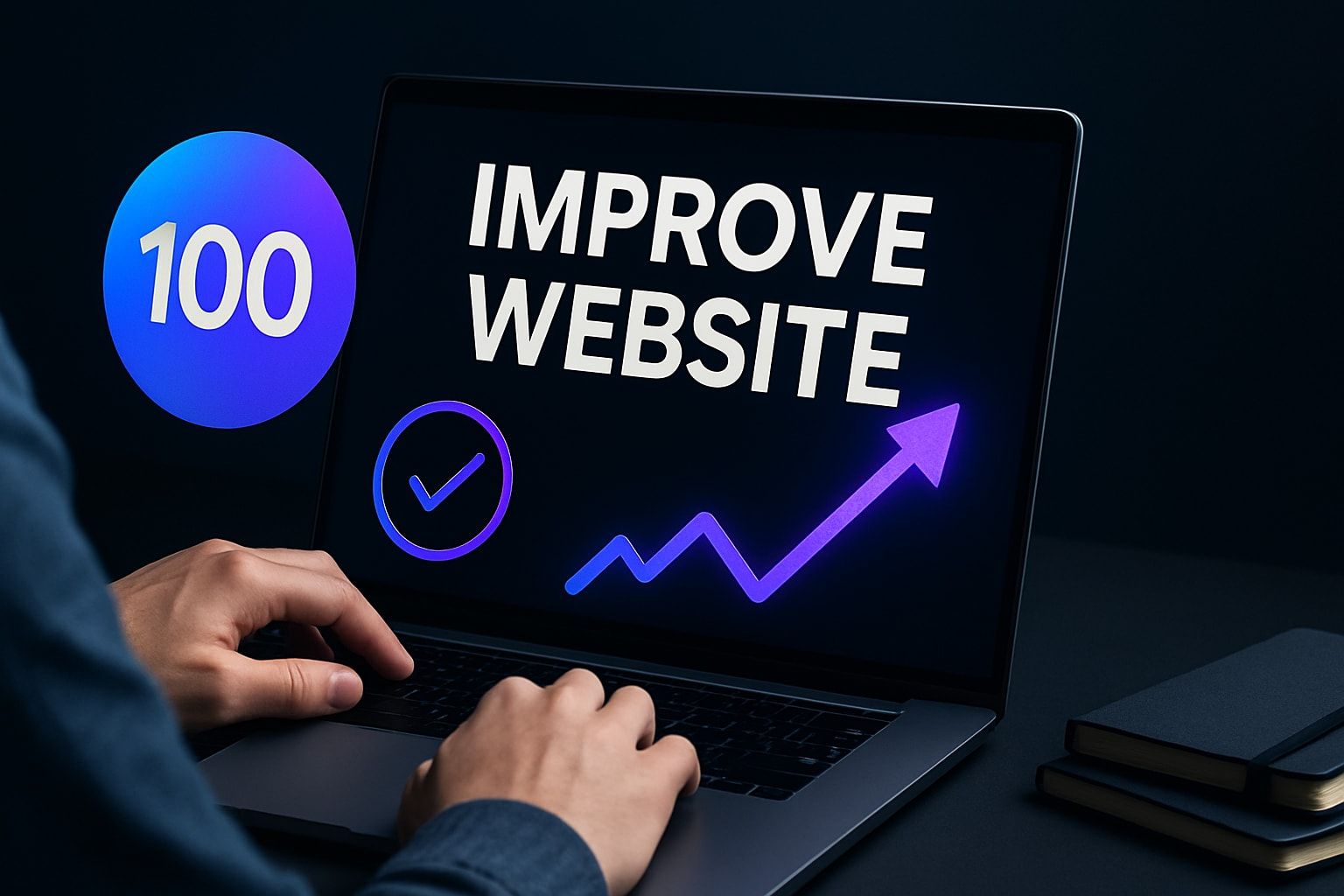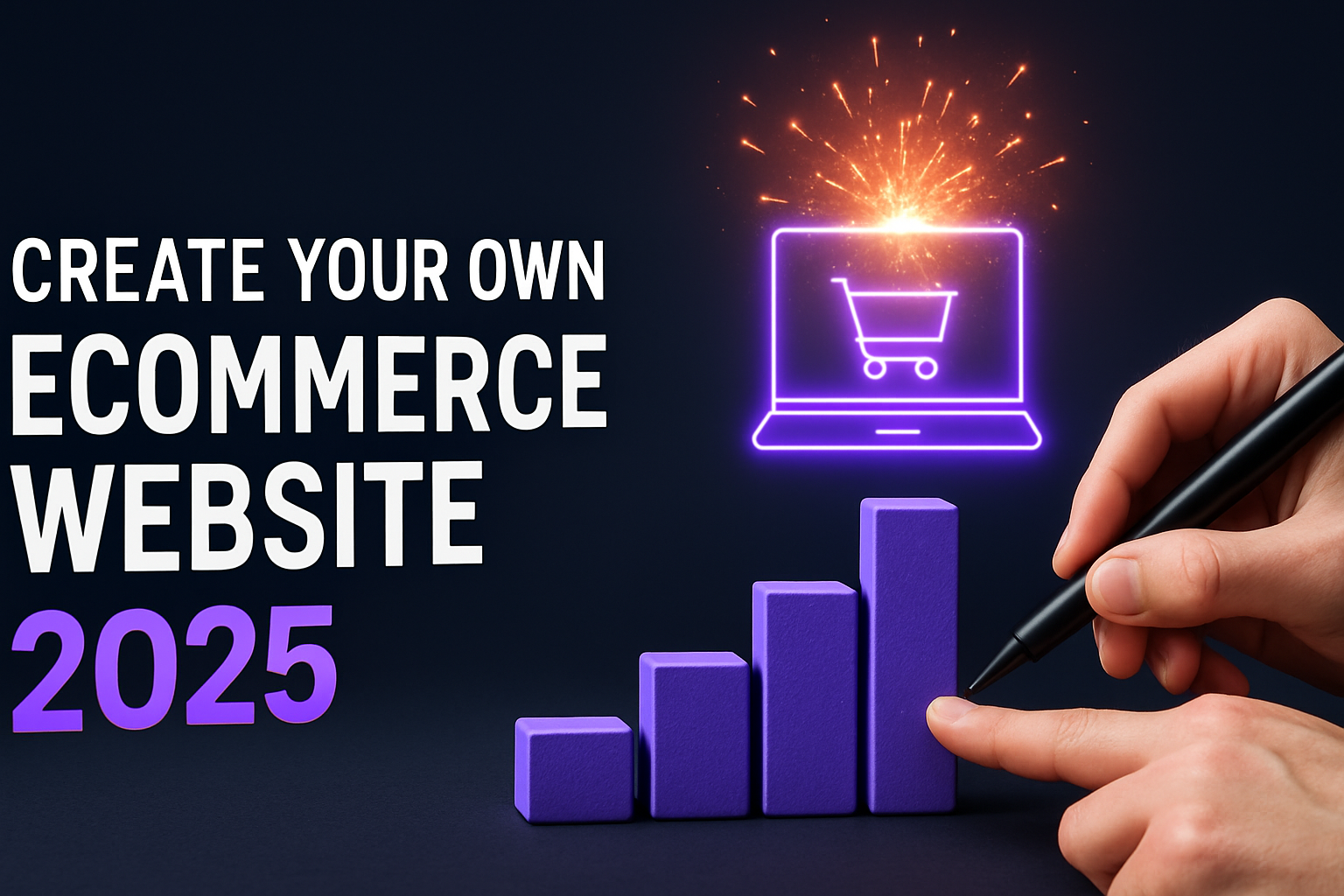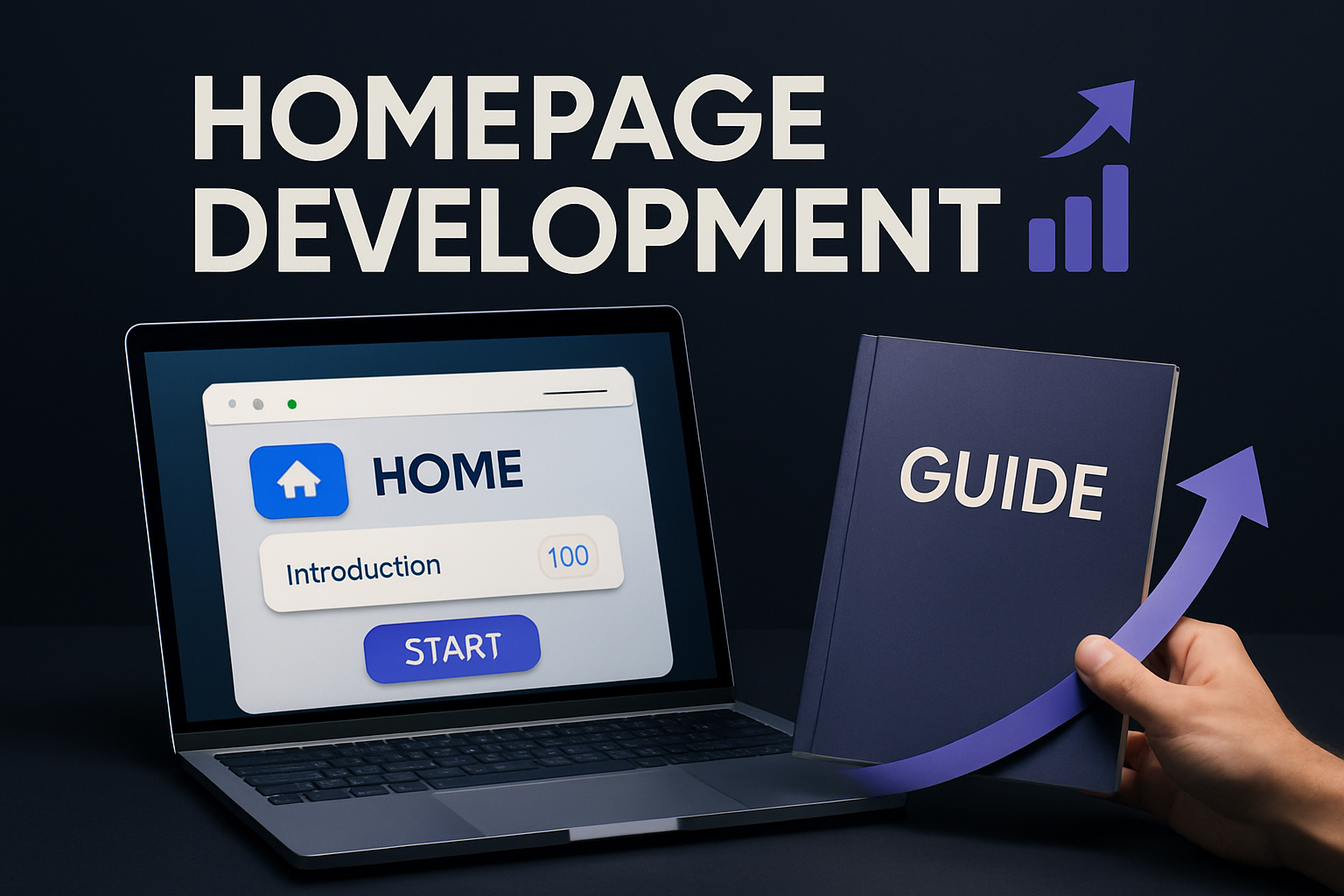Your Site Guide: Expert Steps for Success in 2025
The digital world is evolving at lightning speed, and standing out online is tougher than ever. In 2025, only those who adapt quickly and make smart choices will see their websites rise above the noise.
This guide is your roadmap to success. We break down every step you need for your site to thrive, from strategy and planning to design, content, technology, SEO, and ongoing growth.
Ready to face the future? Let’s dive in and turn your site into a leader. Take action with each step and watch your results grow.
Step 1: Define Your Website’s Purpose and Audience
In the fast-paced world of 2025, clarity is the foundation of web success. Before you dive into building your site, take a step back and ask: What is the true purpose of your site and who are you trying to reach? Getting these fundamentals right will set your site up for measurable growth and lasting impact.
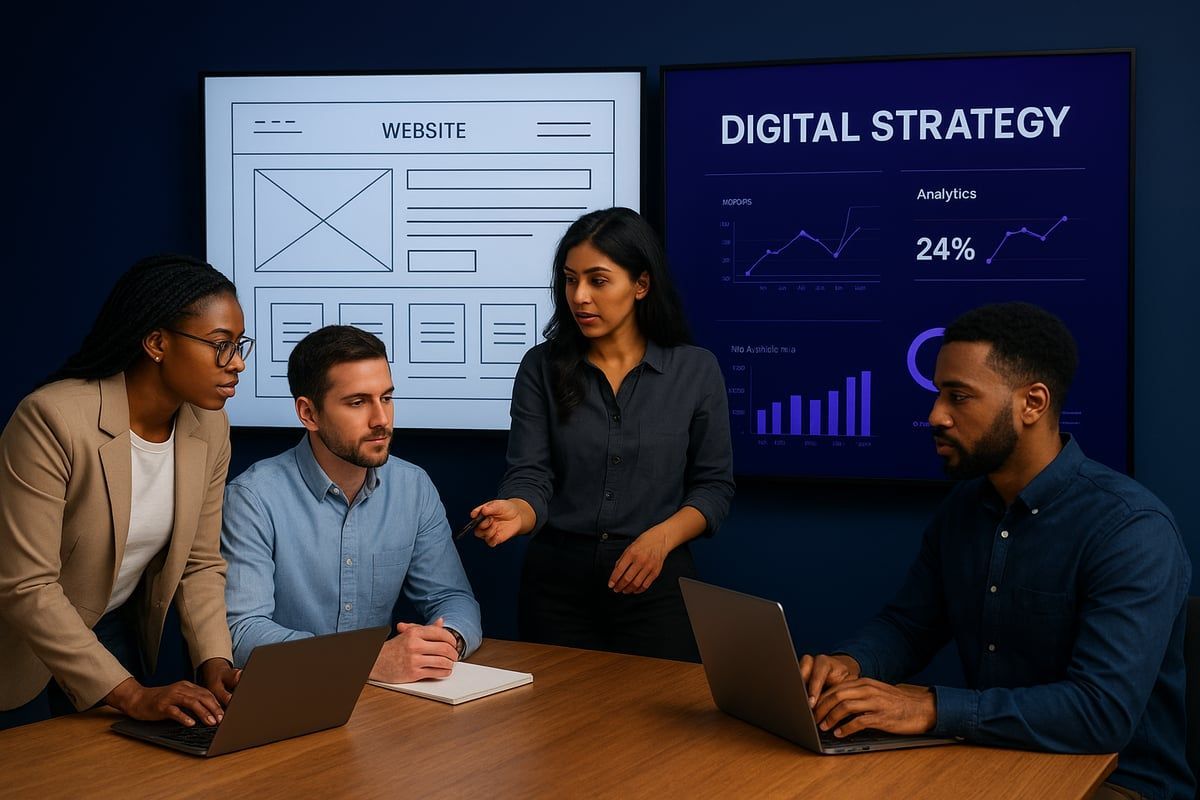
Clarifying Your Website’s Core Goals
Every successful site starts with a clear vision. Define the primary objective of your site: Is it meant to generate leads, power an eCommerce store, showcase a portfolio, host a blog, or foster a community? Pinpointing this will help you avoid vague, aimless development.
Set SMART goals—Specific, Measurable, Achievable, Relevant, and Time-bound—tailored to your brand or business. For example, if your site’s purpose is eCommerce, a SMART goal might be, “Increase online sales by 30% in the next 12 months through targeted product pages and streamlined checkout.”
Align these goals with your broader business objectives for 2025. If your company is prioritizing digital expansion, your site should reflect that ambition. Benchmark your site’s targets by looking at competitors; remember, over 43% of all websites now run on WordPress, showing how industry standards can guide realistic expectations.
Consider this real-world example: A small business shifted its focus to eCommerce on their site and, within one year, doubled their online revenue. The lesson? When your site’s purpose is crystal clear, every design and content choice becomes easier and more impactful.
Fact: 80% of thriving websites have clearly defined, measurable goals. The takeaway is simple—when you know exactly why your site exists, you can make smarter decisions at every step. This clarity is your site’s north star, guiding both strategy and execution.
Understanding and Segmenting Your Target Audience
Knowing your audience is just as vital as knowing your goals. Start by conducting thorough research into demographics, behaviors, and user pain points. Use analytics tools and targeted surveys to validate your assumptions about who visits your site and what they need.
Develop detailed user personas to give your site a human touch. Personas help you shape content, tone, and user experience to match real needs. Do not overlook accessibility and inclusivity; designing your site for all users expands your reach and shows your commitment to a modern web.
For more on this, explore User-Centered Design Principles to ensure your site puts people first and delivers value at every interaction.
Take inspiration from a creative portfolio site that analyzed user interests and tailored content accordingly. The result? Engagement soared, and visitors returned twice as often. Perspective: Sites built around their audience achieve two times higher retention rates.
When you truly understand who you are building your site for, every content and design choice becomes more strategic. Your site will not only attract more visitors but also convert them into loyal fans.
Step 2: Strategic Planning and Platform Selection
Every successful website starts with a solid plan. Strategic decisions at this stage shape how your site performs, attracts visitors, and supports your goals in 2025. Let’s break down the essentials so your site stands out from the crowd.
Mapping Out Your Site Structure and User Journey
Before you build, visualize the journey users will take through your site. Start by outlining key pages, such as your homepage, about, services, or product sections. Create a simple sitemap or wireframe to map how visitors will move from one area to another.
Prioritize intuitive navigation. A logical content flow helps users find what they need with minimal effort. For inspiration, review Website Navigation Architecture for best practices that boost both usability and SEO.
Don’t forget mobile-first design. By 2025, most users will visit your site from smartphones or tablets. A blog that restructured its navigation for clarity saw a 40% jump in traffic, proving how site structure impacts results.
When planning your site, think about how each page supports your overall goals. Your site should lead visitors step by step toward taking action, whether it’s signing up, making a purchase, or reaching out for more info.
Choosing the Right Website Platform
Selecting the right platform is critical for your site’s performance and growth. Compare platforms based on features, scalability, and ease of use. Here’s a quick overview:
| Platform | Scalability | Ease of Use | Features | Hosting Options |
|---|---|---|---|---|
| WordPress | High | Moderate | Extensive | Self/Managed |
| Wix | Medium | Easy | Good | Managed |
| Squarespace | Medium | Easy | Good | Managed |
| Shopify | High | Easy | eCommerce | Managed |
| Avantiy | High | Easy | AI-powered | Managed |
Consider managed hosting for your site if you want 99.9% uptime and faster load speeds. Your site should be built on a platform that adapts as your business grows. Look for integrations, plugin support, and future-proof technology.
Expert tip: Evaluate the tools you’ll need for SEO, eCommerce, memberships, or bookings. This ensures your site can expand as your ambitions do.
Build Smarter with Avantiy: AI-Powered Website Creation
Avantiy is redefining how you build your site in 2025. Its AI-powered platform combines a drag-and-drop editor, customizable templates, and intelligent design tools, so anyone can create a professional site—no coding needed.
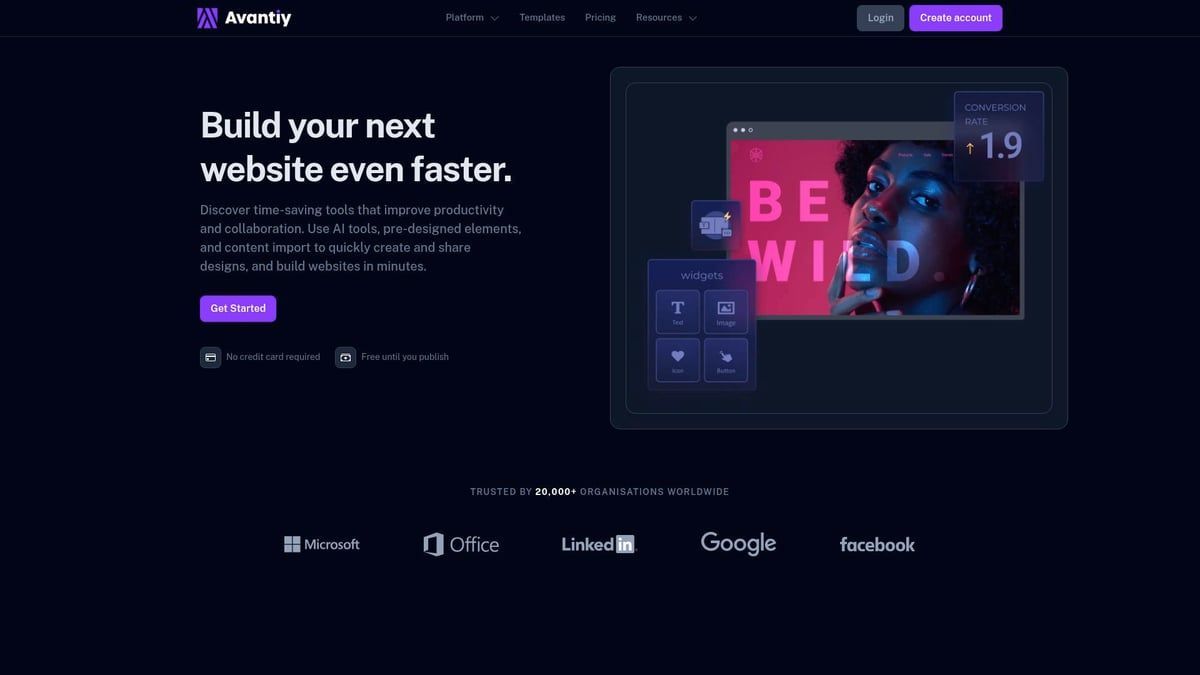
You’ll benefit from built-in SEO, reliable hosting, and AI-generated content, helping your site rank and launch faster. Avantiy supports eCommerce, memberships, bookings, and connects with over 400 apps.
The best part? You can build your site for free until you publish, with no credit card required. Avantiy is ideal if you want to launch quickly, scale confidently, and manage everything in one place. Future-proof your site and stay ahead of the competition with smart, all-in-one website creation.
Step 3: Design for Impact and Usability
Design is the beating heart of your site. In 2025, a seamless blend of aesthetics and usability will determine whether visitors stay or bounce. Every element, from colors to navigation, should work together to create a memorable and accessible experience for your audience.
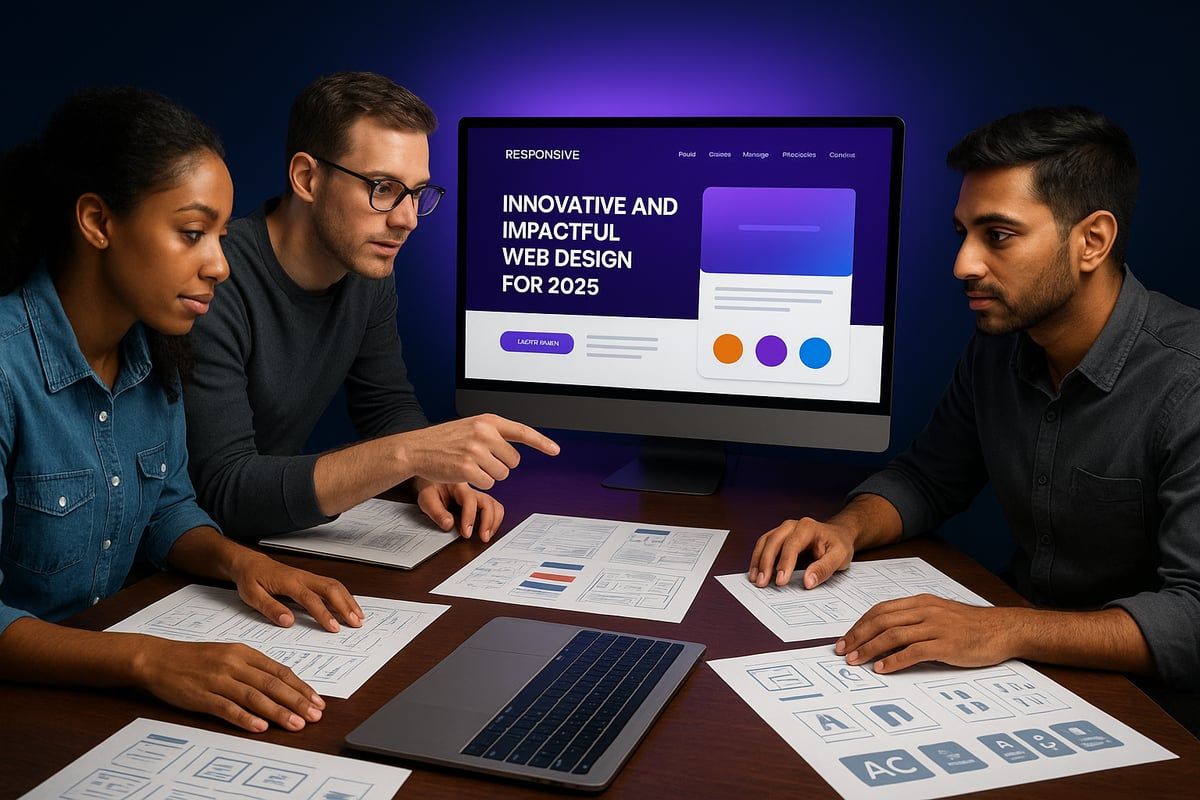
Crafting a Memorable Visual Identity
Your site’s visual identity is its digital fingerprint. Start by selecting a modern, responsive theme that echoes your brand’s personality and values. Color psychology can evoke emotion and build trust—blues for calm, reds for excitement, purples for creativity. Pair this with intentional typography to reinforce your brand’s tone, whether friendly, authoritative, or playful.
Templates offer a shortcut to cohesive design without sacrificing uniqueness. Leveraging professional website templates can help your site maintain consistency and polish across every page. These templates are optimized for 2025 standards, providing a strong foundation for customization.
Consider this: a brand that refreshed its site with a unified color scheme and bold visuals saw a measurable boost in engagement. Consistency in design elements, like buttons and headers, guides users smoothly through your site.
- Choose a palette that matches your brand story.
- Use high-contrast text for readability.
- Incorporate visual patterns for structure.
A well-crafted visual identity ensures your site stands out in a crowded digital world.
Prioritizing User Experience (UX) and Accessibility
User experience is the backbone of your site’s success. Intuitive navigation helps visitors find what they need quickly. Keep menus simple and logical, with clear categories and concise labels. Fast load times are critical—optimize images and scripts to avoid frustrating delays.
Mobile optimization is non-negotiable in 2025. Your site must look and perform flawlessly on every device, from smartphones to desktops. Google’s Core Web Vitals reinforce the need for speed and interactivity, rewarding sites that prioritize user satisfaction.
Accessibility broadens your reach. Follow WCAG 2.2 standards—use alt text, ensure keyboard navigation, and provide sufficient color contrast. This not only serves users with disabilities but also improves SEO and reputation.
Data shows that sites with exceptional UX convert 35% more visitors. Your site should empower every user, regardless of ability or device.
- Test your site on multiple browsers and devices.
- Use clear, actionable calls to action throughout.
- Regularly review analytics to spot and fix UX bottlenecks.
Investing in UX and accessibility makes your site more welcoming and effective for everyone.
Personalization and Interactivity
Personalization transforms your site from static to dynamic. Integrate features like chatbots to answer questions instantly, or add product recommendations based on browsing behavior. These interactive elements engage visitors and keep them coming back.
Analytics tools let you track how users interact with your site. Use this data to refine layouts, test new features, and adjust messaging for maximum impact. A/B testing helps you discover what resonates best with your audience.
Consider an eCommerce site that introduced a personalized shopping experience—customers received tailored product suggestions and interactive quizzes. The result was a significant uptick in conversions and customer loyalty.
- Add interactive elements like polls or quizzes.
- Use dynamic content to greet users by name or suggest content.
- Encourage feedback through surveys or comment sections.
By making your site interactive and personal, you foster deeper connections and drive ongoing growth.
Step 4: Create Compelling, SEO-Optimized Content
Staying ahead in 2025 means making your site stand out with content that not only attracts but also engages and converts. The right approach ensures your site remains visible, relevant, and trusted by both users and search engines. Let’s break down how to create compelling, SEO-optimized content that makes your site a leader.

Developing a Content Strategy for 2025
A strong content strategy is the foundation for your site’s long-term success. Start by identifying cornerstone content, such as detailed guides or flagship product pages, that establish authority and address your audience’s primary needs.
Map out supporting blog posts or landing pages to guide visitors through different stages of their journey: awareness, consideration, and decision. This ensures your site offers value no matter where users enter.
Leverage AI tools to brainstorm topics, edit drafts, and analyze what resonates most with your audience. For example, use AI-driven keyword suggestions to uncover content gaps. Regularly review analytics to determine which pieces drive the most engagement.
Remember, your site should serve as both a resource and a solution hub. Aligning your site’s content strategy with these principles will set you up for measurable growth in 2025.
On-Page SEO Essentials
Optimizing your site for search engines is non-negotiable. Begin with thorough keyword research that reflects 2025 search trends and user intent. Focus on long-tail phrases and questions your audience is likely to ask.
Craft compelling meta titles and descriptions for every page on your site. Structure your content with clear headings and include your primary keywords naturally. Use descriptive alt text on images so your site remains accessible and visible in image searches.
Implement schema markup and structured data to help search engines better understand your site’s content. For step-by-step guidance, explore SEO tools and resources that provide actionable tips and audits tailored for your site’s needs.
These essentials ensure that your site is discoverable, relevant, and competitive as search algorithms evolve.
Content Formats and Engagement
Diversifying content formats keeps visitors coming back to your site. Mix in blogs, how-to videos, infographics, and interactive quizzes. These formats address different learning styles and make your site more memorable.
Encourage user-generated content, such as testimonials or reviews, to foster trust and community. Interactive features like comment sections or polls can boost engagement and time spent on your site.
Here’s a quick table summarizing engaging content types:
| Format | Purpose | Impact on Your Site |
|---|---|---|
| Blog Posts | Inform & Educate | Boosts organic traffic |
| Videos | Demonstrate & Explain | Increases shares & retention |
| Infographics | Visualize Data | Simplifies complex topics |
| Interactive | Engage & Entertain | Drives repeat visits |
Experiment with new formats to find what resonates best with your site’s audience.
Updating and Repurposing Old Content
Keeping your site’s content fresh is crucial for ongoing success. Begin by auditing existing pages to check for outdated information or broken links. Refreshing content signals to search engines that your site is active and authoritative.
Repurpose high-performing content into new formats. For example, turn a popular blog post into a video tutorial or an infographic. This not only extends the life of your content but also reaches users who prefer different media.
Fact: Regularly updated content can increase organic traffic by up to 30 percent. Make it a habit to revisit your site’s top pages each quarter and identify new opportunities for improvement.
Ultimately, maintaining up-to-date content ensures your site remains relevant and continues to attract and convert visitors in 2025.
Step 5: Implement Robust Technology and Security
In 2025, the backbone of your site’s success is its technology and security. High-performance infrastructure, airtight security, and scalable solutions ensure your site remains reliable, fast, and ready for growth. Let’s break down how your site can stay ahead by focusing on these three pillars.
nsuring High Performance and Reliability
Performance is non-negotiable for your site in today’s fast-paced web environment. Start by choosing fast, secure hosting that supports high traffic and offers a global Content Delivery Network (CDN). Sites with a CDN see up to 50% faster page loads, giving your site a competitive edge.
Optimize every asset on your site. Compress images before uploading, minimize scripts, and regularly clean up your database. These steps keep your site running smoothly.
Here’s a quick checklist for boosting performance:
- Select a hosting provider with strong uptime guarantees.
- Use a CDN to distribute content globally.
- Optimize images and scripts for speed.
- Regularly monitor site speed with tools like Google Lighthouse.
By focusing on these essentials, your site will consistently deliver a fast, reliable experience to visitors worldwide. Remember, a high-performing site not only improves user satisfaction but also impacts SEO and conversions.
Security Best Practices for 2025
Protecting your site and user data must be a top priority. Start with SSL certificates and HTTPS to encrypt all traffic. Install firewalls and enable DDoS protection to guard against attacks. Schedule regular security audits to spot and fix vulnerabilities before they become threats.
Keep all plugins, themes, and core software updated. Outdated components are a common entry point for cyberattacks. Make it a habit to check for updates weekly.
Consider this: a business that proactively updated their site avoided a major cyberattack that affected competitors. Simple steps like these can save your site from costly downtime or data loss.
Security is an ongoing process, not a one-time task. When your site follows these best practices, you build trust with visitors and keep your digital presence resilient.
Scalability and Future-Proofing
As your site grows, you’ll need technology that scales with demand. Choose platforms and plugins that are flexible and built for expansion. Plan ahead for increases in traffic, new features, or even a complete pivot in your business model.
Scalable infrastructure prevents downtime during growth spikes. For online stores, using eCommerce solutions for your site ensures you can add products, integrate new payment systems, and manage inventory as you expand.
Here are some ways to future-proof your site:
- Select platforms that support integrations and automation.
- Regularly review capacity and upgrade hosting as needed.
- Stay informed about new tools that help your site adapt.
By planning for scalability, your site will be ready for whatever the future brings, whether that’s a sudden influx of visitors or a new direction for your brand.
Step 6: Launch, Analyze, and Optimize Continuously
Launching your site is a milestone, but it is just the beginning. To thrive in 2025, you need an ongoing strategy for analyzing performance and optimizing every aspect of your site. Let us break down the steps to ensure your site not only launches strong but continues to grow.
Pre-Launch Checklist and Testing
Before you unveil your site to the world, a thorough pre-launch checklist is crucial. Testing every element ensures your site works seamlessly for every user. Focus on these essentials:
- Validate all links, forms, and interactive features.
- Test your site across devices and browsers for consistent experiences.
- Use tools like Google Lighthouse to check performance scores.
- Confirm site speed, security, and mobile optimization.
For 2025, a mobile-centric approach is a must. Following Mobile-First Responsive Design best practices will help your site cater to most users. Remember, launching your site with thorough testing builds trust from day one.
Launch Strategies for Maximum Impact
When you are ready to launch, create buzz. Announce your site through email, social media, and PR. Influencer partnerships and early access offers can attract your first visitors.
Consider these launch tactics:
- Tease your site with countdowns and sneak peeks.
- Offer exclusive deals to early users.
- Collect feedback to refine your site quickly.
A memorable launch can set the tone for your site’s growth. For example, a startup that combined social teasers with a beta invite list saw a surge in early engagement. Make your site’s debut an event.
Post-Launch Analytics and Optimization
After launch, monitor your site’s performance closely. Set up analytics tools like Google Analytics, Search Console, and heatmaps to get real-time insights.
Key KPIs to track include:
| KPI | Why It Matters |
|---|---|
| Traffic | Measures reach |
| Conversions | Tracks goal completion |
| Bounce Rate | Reveals engagement |
| Session Time | Shows content interest |
Use this data to A/B test pages, refine content, and improve user journeys. Continual analysis ensures your site adapts to changing trends and user needs.
Ongoing Content and Technical Maintenance
Keeping your site fresh is essential. Regular content updates and technical audits maintain site health and boost SEO.
Key maintenance tasks:
- Schedule content reviews and new posts.
- Check for broken links and outdated plugins.
- Run security checks and keep software updated.
Sites with consistent maintenance show 20 percent higher reliability. Make a habit of reviewing your site monthly to prevent issues and keep your site competitive.
Growth Tactics for 2025 and Beyond
Growth does not stop after launch. Experiment with new marketing channels to expand your site’s reach.
Ideas to scale your site:
- Start a newsletter or podcast for deeper engagement.
- Add community features like forums or memberships.
- Run contests or Q and A sessions to foster loyalty.
For example, a blog that added a members-only community saw increased retention and engagement. Stay innovative and adapt your site to new trends for lasting success.
Step 7: Scale with Integrations, Automation, and Community
Scaling your site in 2025 means thinking beyond launch. It is about creating an ecosystem where tools, automation, and people work together. As your site grows, the right integrations and community features set you up for lasting success.
Leveraging Integrations for Efficiency
The backbone of your site’s efficiency is smart integrations. Connect your site to CRMs, email marketing platforms, and analytics tools. This not only centralizes your data, but also gives you a real-time pulse on business growth.
Automate key workflows, such as:
- Lead capture forms that sync with your CRM
- Automated welcome emails for new signups
- Cart recovery emails for eCommerce
These automations free up your team’s time and ensure visitors get timely responses. For example, an eCommerce store that set up automatic abandoned cart emails saw sales increase by 20 percent within months.
As you scale, integrations help your site stay agile. By linking your site’s data with marketing and support platforms, you can deliver seamless experiences without manual effort. Make it a habit to review integration options as new tools emerge, ensuring your site keeps pace with changing needs.
Building and Engaging Your Online Community
A thriving online community transforms your site from a static platform into a hub of engagement. Add features such as forums, comment sections, or membership areas to encourage users to connect, share, and return.
Communities can be sparked by:
- Hosting regular Q and A sessions or webinars
- Opening a feedback channel for site improvements
- Offering exclusive content or perks to members
Sites that foster active communities see up to 60 percent higher user retention. For your site, this means greater loyalty and more meaningful interactions. Encourage user contributions and spotlight community voices to build trust and credibility.
Remember, the foundation of a strong community is two-way communication. Listen to your audience, respond promptly, and evolve your site based on their input.
Preparing for Future Trends and Technologies
The digital landscape is always shifting. To ensure your site remains ahead, stay alert to trends like AI-driven personalization, voice search, and web3 integrations.
Here is how you can future-proof your site:
- Regularly review new technologies and assess their fit
- Pilot emerging features with a segment of your audience
- Invest in adaptable platforms that make integration simple
Early adoption often brings a competitive edge. For your site, being ready to pivot ensures you capture new opportunities as they arise. The most successful sites in 2025 will be those that embrace change, test innovations, and never stop evolving.
Ready to put these expert strategies into action and set your website up for real success in 2025? You’ve got the insights, the tools, and the confidence to build something unique that stands out online. With Avantiy’s intuitive drag and drop editor, AI design tools, and built in SEO, you can skip the headaches and focus on what matters most—growing your business and connecting with your audience. Why wait for tomorrow when you can take the first step today?
Start Building Your Website Today and see how easy it is to bring your vision to life.
Start building your new website today
No credit of debit card required start building today
